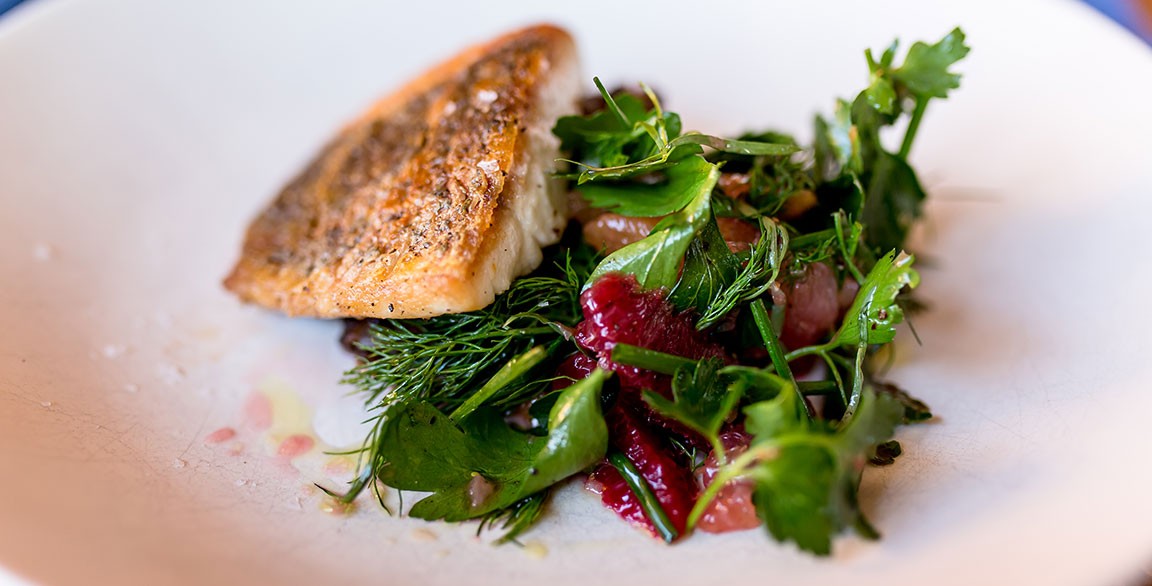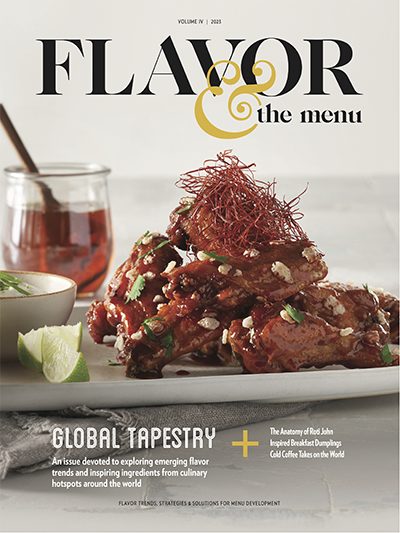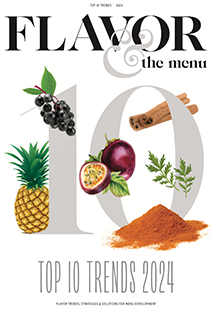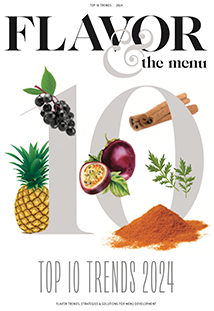

The world’s larder is well stocked with a diverse array of citrus—from familiar lemons and limes to more exotic varieties, like the deep-hued blood orange or the Meyer lemon hybrid with its gin-like aroma. Citrus fruits share three important culinary qualities: acid, sugar and aroma. This is why they are some of the most useful and versatile ingredients that chefs around the globe reach for to lend bright, light, elegant touches to their menus.
Sometimes a recipe features citrus as a primary ingredient, as in many styles of ceviche, where the acid is the defining component. In other dishes, the citrus is subtle, introducing elegance and finesse. Acid, in all culinary forms, is akin to salt in its impact: It makes every other ingredient taste more like itself, and better.
Here’s a collection of creative ideas and interesting varietals to consider.
Grilled Citrus
The beauty of citrus fruits is that each provides a unique blend of sweet and sour. But that doesn’t mean that a chef can’t edit those characteristics. Grilling (or sautéing) halved lemons or limes caramelizes the sugars, intensifying their impact and giving the fruit a sultry/smoky flavor. Surfside restaurant in Washington, D.C., serves charred limes as an accompaniment to fish-of-the-day tacos.
Agrumato
This is an oil that is made from pressing olives with citrus, typically lemons or oranges. It’s particularly good for drizzling as a finishing ingredient or adding just a few drops over crudo, the now-popular dish introduced by legendary seafood chef David Pasternack of Esca restaurant in New York.
Citrus in Bouillabaisse
Add a few strips of orange peel to this unctuous broth that is flavored with saffron and aromatics. The subtle orange helps to meld the flavors of the many types of seafood in the stew.
Pomelo
As a culinary ingredient, pomelo is much like a grapefruit but with less bitterness. Segments tossed with olive oil, diced shallots, and tarragon make for a great salsa to top grilled fish. The Honey Paw in Portland, Maine, serves up a seasonal pomelo salad with fermented and dried shrimp. The citrus segments are the main component and are supported by shallots and herbs.
Fried Lemon Slices
Use these as the base for a salmon canapé or as a textured garnish to seafood-centric salads and entrées. Thin slices of whole lemons are brined for an hour or so, drained and patted dry, coated in Wondra flour and fried until crisp. This is particularly good as a delivery platform for tuna tartare or chopped shrimp dressed with rémoulade.
Blood Orange
This varietal’s distinct maroon color adds a striking visual pop, while the rich orange taste provides a smoothly acidic offset to seafood dishes.







